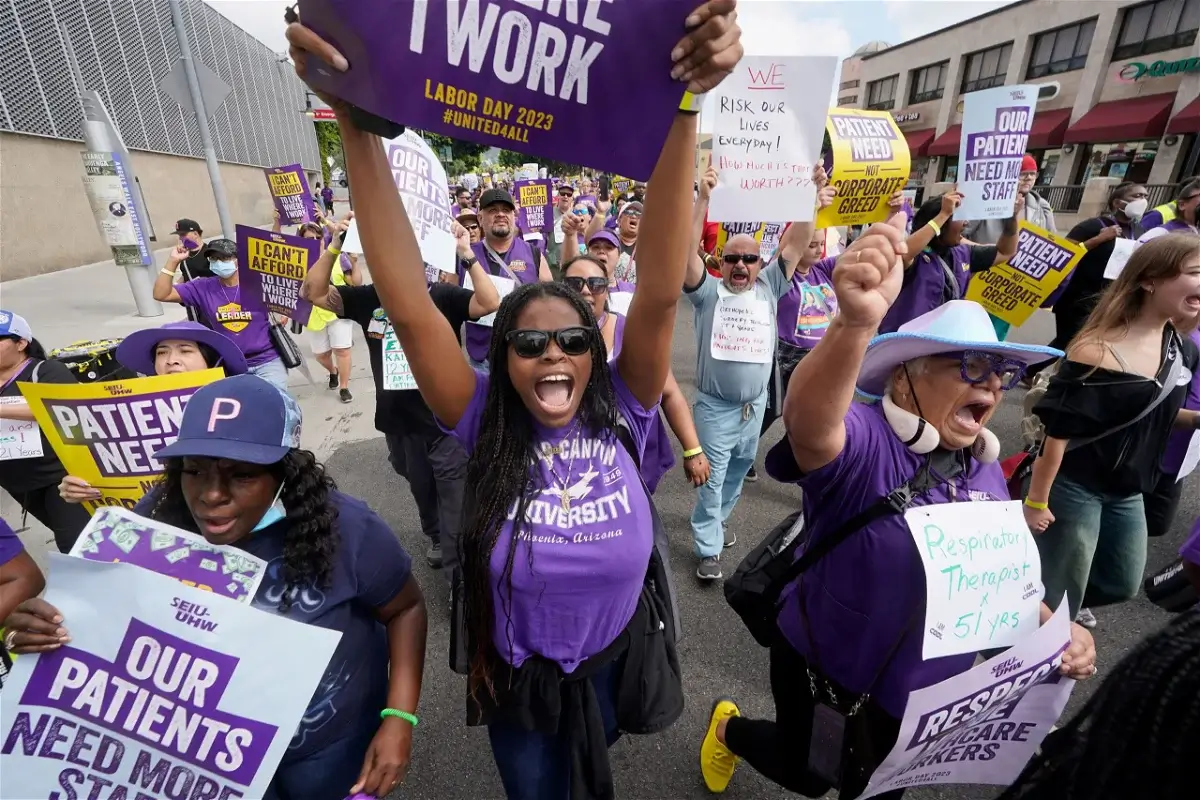Kaiser Permanente Healthcare Workers Launch Historic Strike Amid Staffing Crisis
In an unprecedented move, more than 75,000 unionized employees of Kaiser Permanente, one of the nation’s largest nonprofit healthcare providers, initiated a three-day strike across several states, marking the largest healthcare worker strike in U.S. history. A staffing crisis has triggered this strike intensified by the COVID-19 pandemic, with healthcare workers demanding better conditions and pay.
Here’s a comprehensive look at this historic labor action and its implications.
1. Unprecedented Healthcare Worker Strike
- Over 75,000 Kaiser Permanente healthcare workers walk off the job.
- The strike spans multiple states, including California, Colorado, Washington, Oregon, Virginia, and Washington, D.C.
- The strike, organized by a coalition of eight unions, marks a significant moment in labor history, affecting 40% of Kaiser’s workforce.
2. Root Causes: Staffing Shortages and Burnout
- Healthcare workers have endured staff shortages, leading to overwork, burnout, and a compromise in patient care.
- Unions argue that Kaiser needs to hire more staff and offer competitive wages to address the crisis, a demand also fueled by the pandemic’s exodus of healthcare personnel.
- Similar strikes have erupted across the healthcare industry in recent years, reflecting nationwide concerns over inadequate staffing levels.
3. Strike Impacts and Patient Care
- Patients, particularly in California, are expected to face delays in appointments and non-urgent procedures.
- Kaiser Permanente has implemented contingency plans, emphasizing that hospitals and emergency departments will remain operational with alternative staffing.
- The strike is temporary, scheduled to end on October 7, but there are warnings of a more extended and robust strike in November if an agreement is not reached.
4. Workers’ Demands and Negotiations
- The union coalition seeks higher wages, improved staffing levels, protections against outsourcing, and advance notice for remote workers returning to in-person work.
- Kaiser Permanente has offered location-dependent wage increases but faces resistance from the unions, who demand a more substantial across-the-board raise.
- Negotiations continue, with both sides trying to bridge the gap between their proposals.
5. Broader Labor Trends
- The Kaiser Permanente strike is part of a larger wave of labor activism across various industries, fueled by concerns over pay, benefits, and working conditions.
- Other sectors, such as the United Auto Workers and the entertainment industry, have also witnessed significant strikes.
- Healthcare workers’ strikes have become more common, with burnout and staffing shortages taking center stage.
Conclusion
The Kaiser Permanente healthcare worker strike is a historic event highlighting the ongoing challenges in the healthcare industry. As healthcare workers rally for improved conditions and higher pay, the strike serves as a symbol of the broader labor movements sweeping across various sectors, emphasizing the urgency of addressing staffing shortages and worker well-being in the post-pandemic era.
- Unlock WellHealthOrganic: Embrace a Healthy Life - October 22, 2023
- 75,000 Kaiser Permanente Health Care Workers Begin Strike - October 4, 2023
